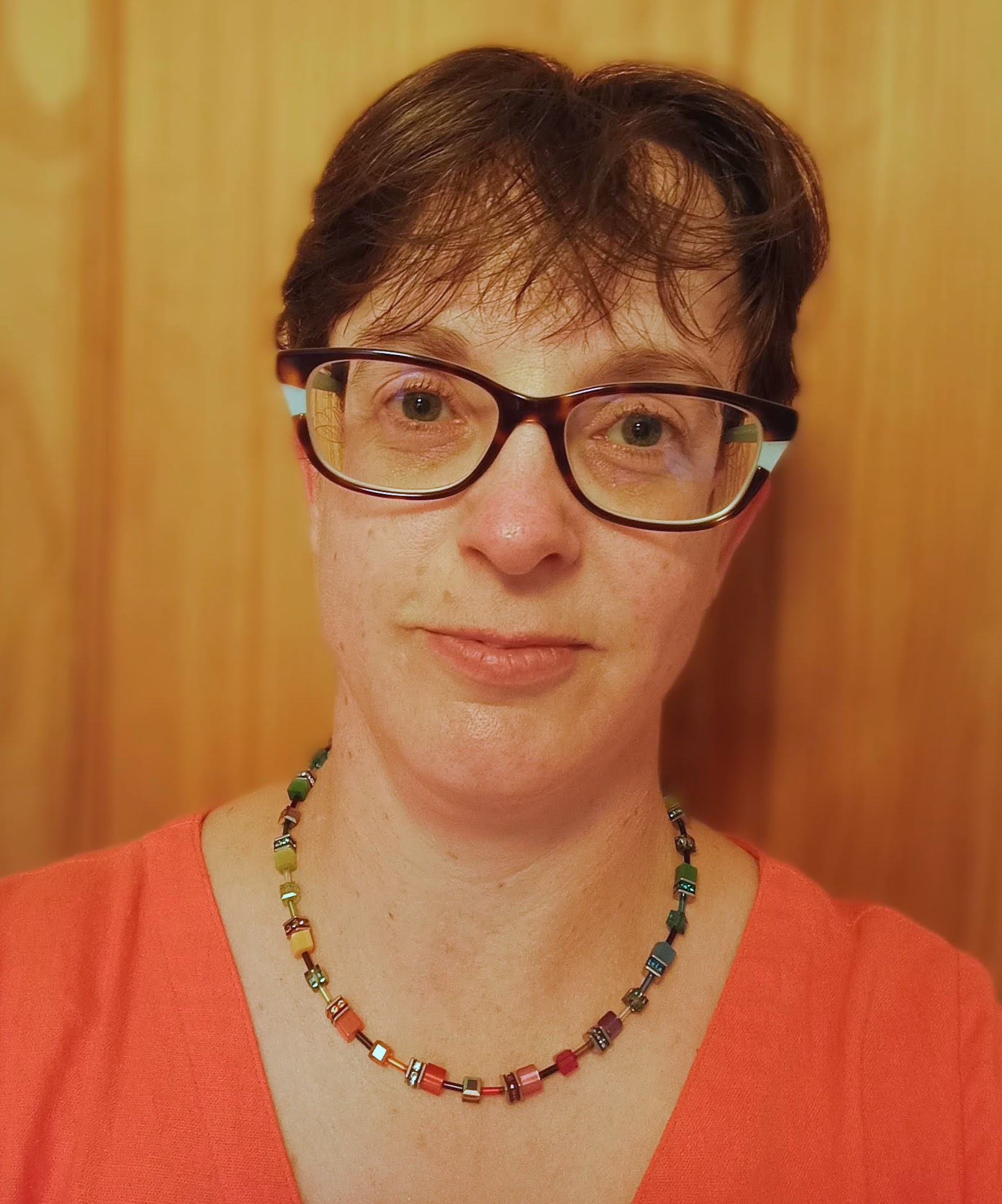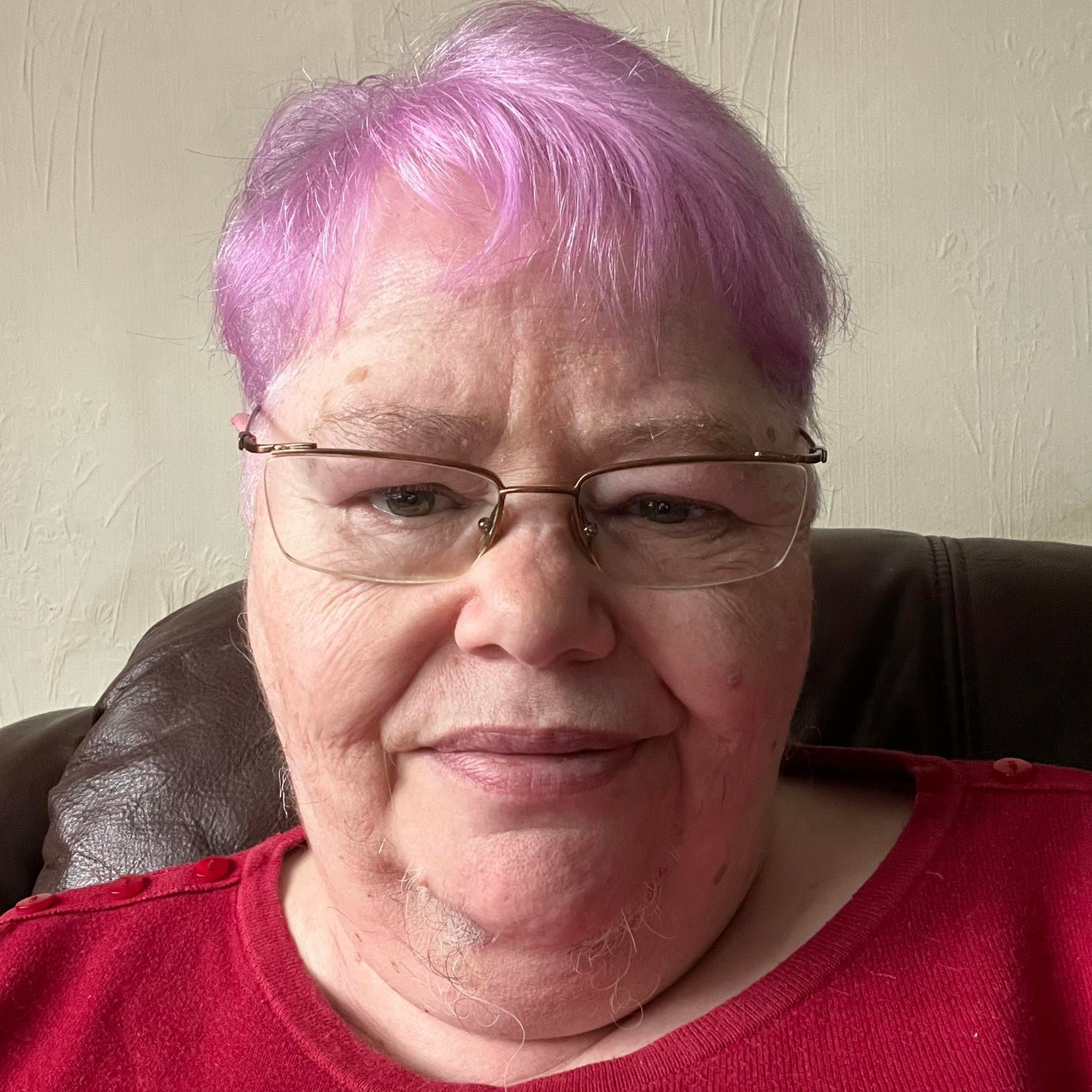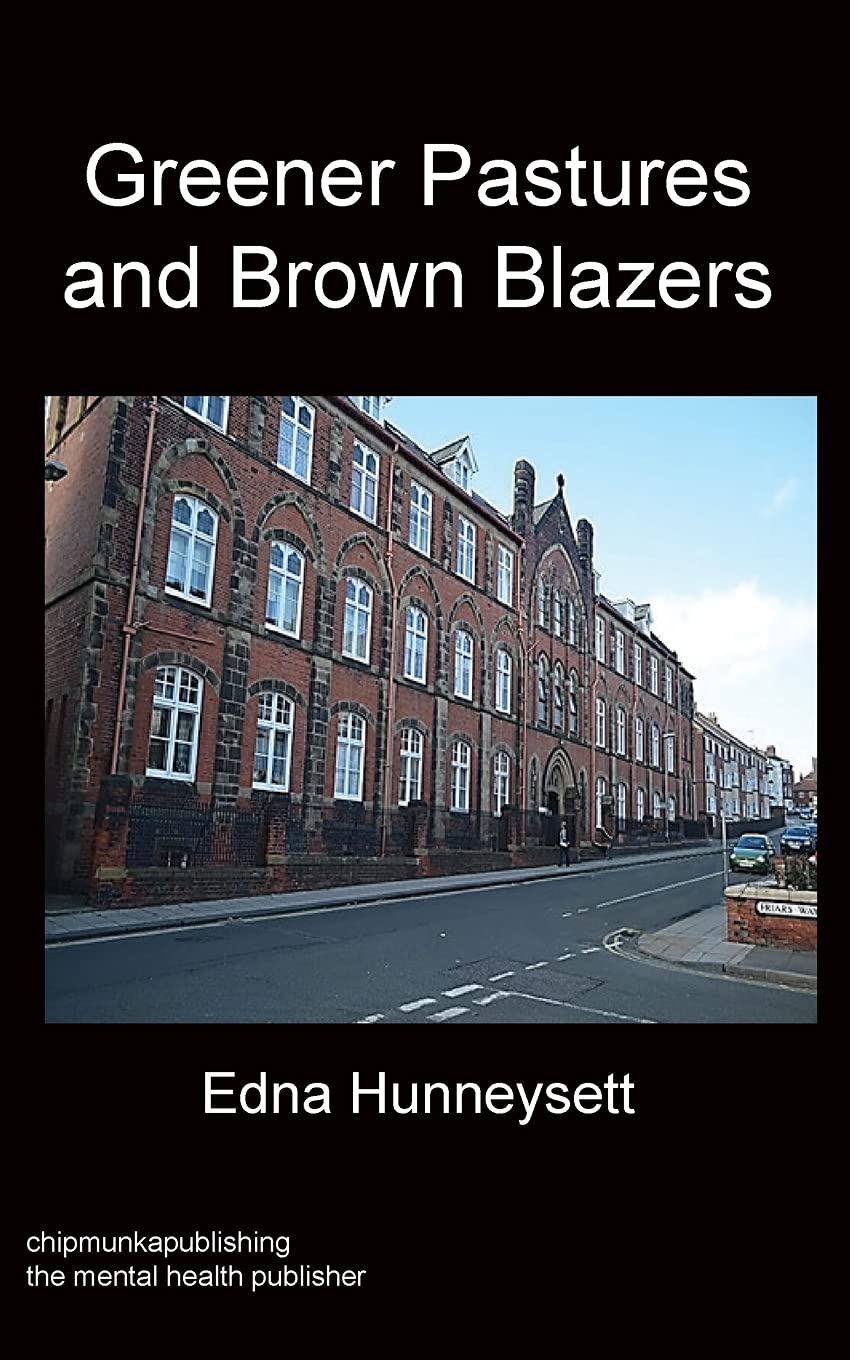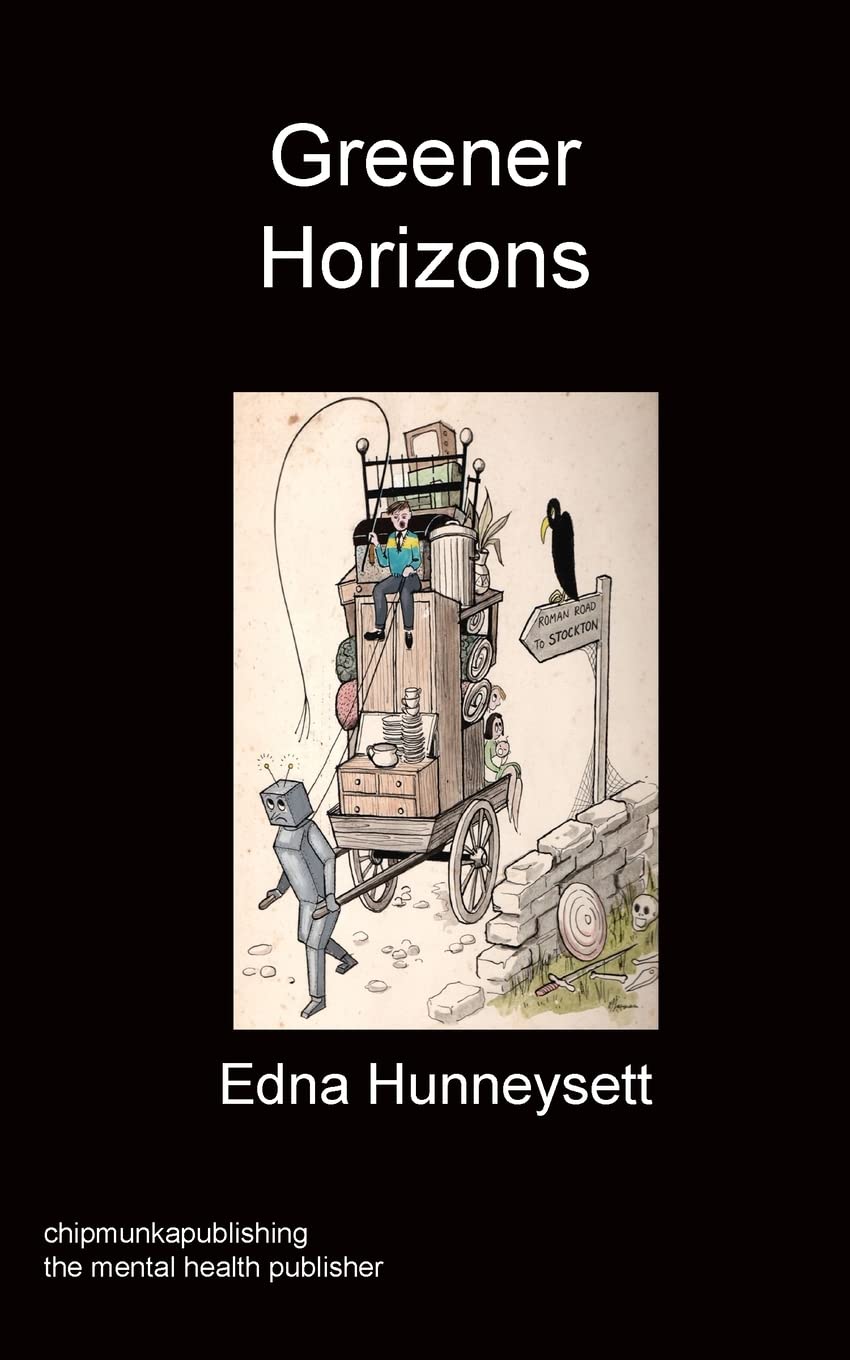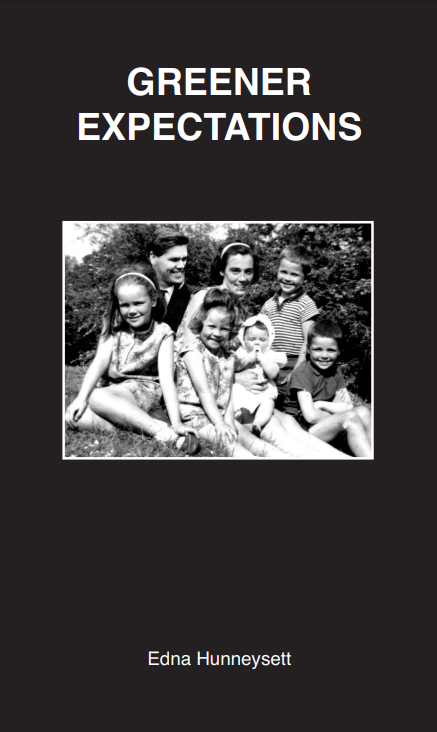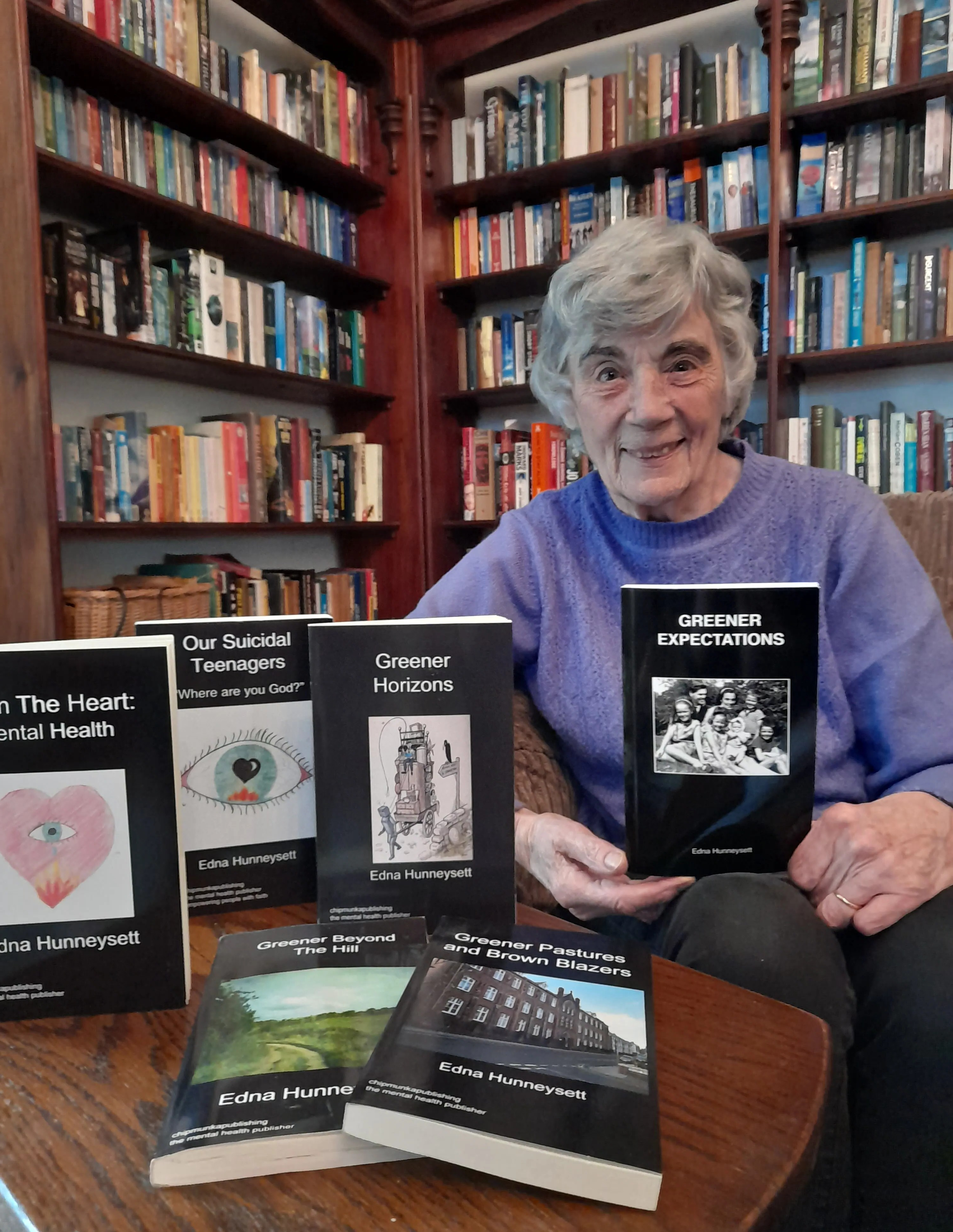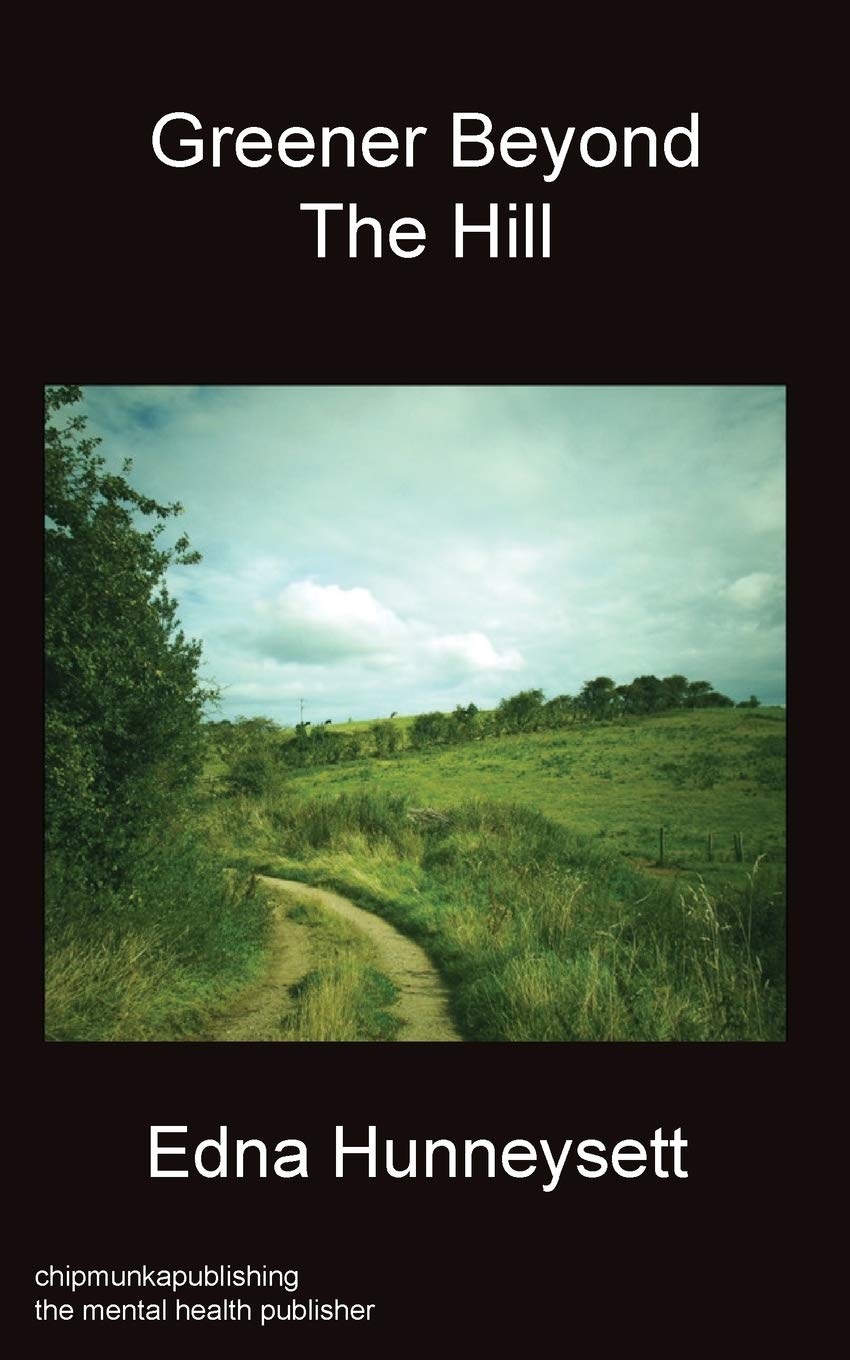
Greener Beyond the Hill
Cover Blurb
Experience life on a small Yorkshire farm as Britain recovers from the Second World War in this semi-biographical rural mystery. Moving from town to country is more than a change of scenery for Mary, wife to hard working Tom and mother to three small children. As she struggles with her ever-increasing family, stark living conditions, poverty and loneliness, Mary is drawn to the company of the handsome and convivial Jack Netherfield. The neighbouring farmer flatters Mary and spoils her children, causing friction with the often absent Tom. As events plough even darker furrows, family secrets are overturned and relationships are changed forever.
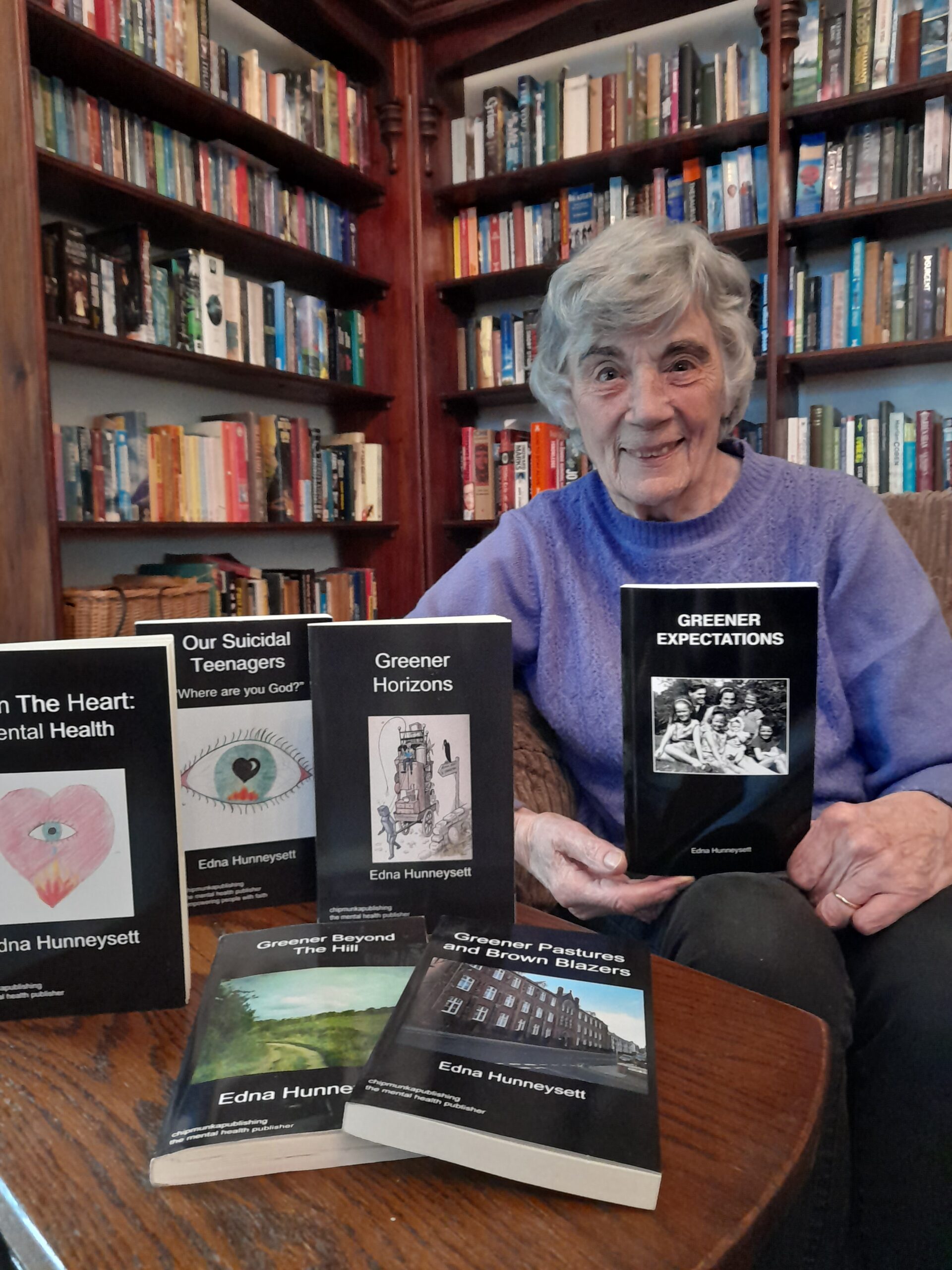
Edna Hunneysett
Author Bio
After the death of her father, Edna Hunneysett's eighth (and last) child was born. Wanting to have something to tell her about him, she began writing the story of her life from the age of two. Edna was brought up with six siblings in poverty on an isolated farm on the North Yorkshire Moors with no mod cons. The family finally got a tractor when she was aged ten and that became their method of transport, even using it to travel to church in the village and parking it on the village green! When looking to get the book published Edna tried many publishers unsuccessfully. Her youngest daughter became seriously ill at thirteen and was suicidal. At the time Edna was studying for a degree by distance learning. She decided to study for her Masters so she could research support for families dealing with mental illness, including support from their church community. She was given a distinction and the hope that it would be published in some form. She went on to write her account of six years of her daughter's illness and the devastating effect on their family. This became the first of three books Edna published on the subject of mental health. After her daughter's recovery, Edna went on to work alongside her to revisit the book about Edna's early life. This time she approached it as fiction, being inspired by rather than recording exact details of her family's lives. This book eventually went on to be published and a further three in the series have followed. The fifth and final instalment is due in the summer of 2025. Edna lives in Middlesbrough with her husband of over sixty years, Ray. She is the oldest member of our family of Book Dragon authors and we're proud to stock her books in our Stockton shop and on our website.
The Book Tour
Day 1 - Favourite Quotes
Day 2 - Character Summaries
Emma. It would be easy to say that Mary would be the favoured character. After all, the story is mostly told from her point of view. However, she and Tom take a back seat to the antics of their children, little Emma in particular. From the beginning on the book, we learn that Emma is a cheeky, boisterous, adventurous little girl who is going places fast. As the story unfolds, we catch glimpses of Emma’s development, and when she falls ill, or gets into a scrape, we see her maturity grow. This is particularly evident in her decision that farm life just might not be for her, and she studies hard, ensuring herself a place at a grammar school so she can realise her ambition to be a lady. Or at least, that’s what we can assume as the story closes before she is fully grown. We can see, however, that she is well on the way. (Phoebe Wilby)
Mary. It is hard to pick just one character to talk about as while the book mostly follows Mary, we also get scenes from the perspective of her husband Tom and some of their children as well. However, the book begins with Mary’s POV and so hers is the one that is most easy to follow. Mary is described as a beautiful woman who loves her family and is smart. However she decides to marry a farmer and live the country life. Her progression is well done; as we see her with so many hopes and dreams to rise out of poverty and farm living but life takes a detour when she and Tom decide to live in Moorbeck. She struggles intensely with the new routines, being pregnant on top of it and it is hard seeing her continue to struggle throughout. However, with a little help from some of the neighbors, she manages to overcome and the family keeps growing. Her love for the children intensifies, she becomes skilled at many things she didn’t think she could, and her children go on to make her proud. She becomes active in the village and starts having a life outside of just being a mother. Her gentle nature is a hallmark throughout the book. The only character flaws to me were her ongoing depression; especially each time she got pregnant. And a certain passivity and enabling especially when it came to Jack Netherfield. But no one is perfect and those arcs were handled pretty well. It is good in the end to see her satisfied with the life they’ve created. (Sophie Jupillat Posey)
Jack. I thought that the character of Jack Netherfield brought a lot of tension and intrigue to the story while feeling like a grounded and believable character. (Tim Marshall)
Tom. Tom, the husband in the book, is my favourite. We immediately feel for him at this point “There was something about this neighbour that troubled him. ‘Maybe I’m overreacting,’Tom thought, and with that, he dismissed the idea.. We are constantly rooting for him to succeed, as he so desperately wants to for his family. The author does have several differing emotions for Tom throughout this book, and we, the readers, feel each one as if it is our own. His reaction to the surprise twist at the end is not something that we could have imagined, but defines his character strength. Anyone who is ‘on the fence’ about this character will definitely be on his side by the end. (Yvonne Marrs)
Mary. As the character who is the main focus of most of the book, the reader is in her head the most. She shows a strength that many women of this period also did. Though she struggled with her situation on the farm to begin with, she brought up her children with affection and sympathy. As the books goes on, Mary’s character grows, from a young ‘townie’ to a farmer’s wife. She becomes a wife and mother in a harsh environment with fortitude and the ability to look to the future of her growing family. (Carol Kerry- Green)
Day 3 - Favourite Excerpts
‘We must have some mousetraps,’ she pleaded with Tom when he arrived downstairs, ‘and that old cat, the one Moorhouses left, is useless. I can’t stand mice droppings all over. Their foot marks are in the frying pan today because I forgot to put it away in the pantry last night. They’ll find their way in there next. Then what will I do?’ (Phoebe Wilby)
‘You know that old proverb, Tom. The grass is greener on the other side of the hill. Well, it certainly wasn’t greener for me, not at first, you know. It was a total letdown. My dreams were blown away.’ She laughed. ‘But I’ve grown to love it.’ (Sophie Jupillat Posey)
’The information from Dorothy’s latest letter was that the Moorhouse's’ farm sale of stock and machinery was imminent. Soon Mary was packing their belongings into boxes but found this to be something of a nightmare. ‘No, Emma, no,’ was her constant cry. Emma found packing pots, jugs, jars, and such like, fascinating and as soon as Mary turned her back, Emma was pulling at the paper and unravelling packages neatly stacked in readiness. One afternoon, amid all this activity, Emma made her way up the steep stairs, sat on the top step and waved her tiny hand to the horrified faces below. ‘Isn’t she clever, Mammy?’ shouted Martha. Mary was unimpressed.’ (Tim Marshall)
‘Tom smiled and glowed inwardly. His boots were well worn and his tattered jacket was fastened with a piece of binder twine, but despite these outward signs of poverty, Tom felt like a king.’ Driving home his new tractor, this beautifully written description enables the reader to feel the emotions in the scene. There are many parts like this within the book that draw the reader fully in.’ (Yvonne Marrs)
‘Life was easier for Tom and Mary with the washing machine and with the tractor. Tom’s herd of cattle increased in numbers producing a greater milk yield, resulting in bigger milk cheques at the end of each month.’ (Carol Kerry-Green)
Day 4 - Video Interview
Day 5 - Reviews
Overall Star Rating 4.5 Stars. Greener Beyond The Hill by Edna Hunneysett is the story of Tom and Mary Holmes’ move with their growing family from a farm where Tom was just another worker to a tenant farm of their own. The transition is not easy for Mary who was brought up in town. Her dreams of the idyllic country life were dashed at the first farm, and she dreamed of a better life once they were at a farm of their own. She soon learns how difficult life on the land can be, particularly starting with next to nothing, but gradually, as the years unfold, she learns to appreciate the land and grows through the struggles she overcomes. The story is based on true life and my assumption is that Edna is represented by the young Emma. The story describes the hardship of post-war farm life, how misunderstandings can almost lead to tragedy, and how forgiveness and acceptance can change a bitter life into a life well-lived. There was a bit of head-hopping which was a little difficult to follow at first and took a bit of extra concentration. Once I got my head around it, it worked with the story and was fine. I thought some characters could have been developed more. For example, Jack was mentioned in each section, but only briefly, and didn’t seem to have much relevance to the story. It’s not until the end that we realise what his relevance is, and it would have been better if his character could have been fleshed out more to make the ending less abrupt. Overall, however, it was a good read. (Phoebe Wilby)
Overall Star Rating 4.5 Stars. This book follows the life of Mary and her husband Tom Holmes in the setting of WWII in Yorkshire. Mary is a resourceful woman who struggles a bit with life. Her children keep her busy, and life becomes even harder as the family moves to Moorbeck– a small, very rural town that is hard to access. They struggle a lot with finances and rural life. Mary also gets pregnant and the load gets heavier as more children appear. All the characters in the family are fairly well fleshed out; Mary and her husband are easy to relate to, their older children like Tim, Martha and Emma. The surrounding cast of villagers are less well-rounded, but we come to know them and their roles in the family; Mrs. Featherstone for example or Charlie. Of course there is Jack Netherfield, Tom’s nemesis who is charming but villainous. He throws a wrench more than once in their life, and while the ending shows his motivations more clearly, his character all throughout is just lightly touched on. The dialogue however is clear and easy to follow for the most part. The scenes move along in chronological order and it feels like we get adequate glimpses of each passing year. Overall, the pacing of the novel is very slow. The ending packs a punch, but it goes by quickly and is jarring considering the slow pacing of the rest of the book. The descriptions of the countryside living are lovely and grounded; and the details of farm living feel authentic. Overall, the book has a pleasing message of resilience and shows a “gritty” account of rural living in WWII but it has a quiet poetry to it that is satisfying to read. (Sophie Jupillat Posey)
Overall Star Rating 4.5 Stars. A story that has the sense of both coziness and everyday drama of the likes of ‘Little House on the Prairie’ that has been told with a lot of care for its central ensemble and insight into a cast of a variety of ages and over a number of years. There’s a thread of mystery and tension throughout that is also well handled. I very much enjoyed the author’s voice, and felt like I had a vivid picture of the setting despite the generational gap. (Tim Marshall)
Overall Star Rating 4.5 Stars. Greener Beyond the Hill’is a book from another era. If you don’t know farming life, this is a real eye opener - life is more than tough!! The author has a great voice throughout, the story flows smoothly and there are no errors to spoil the readers enjoyment. Throughout, the plot is easy to follow and the twist in the end is one that we don’t see coming, therefore is more enjoyable because of this. We are rooting for the family as the book takes us through their lives together - a wholesome and entertaining read. I’d happily recommend this book. (Yvonne Marrs)
Overall Star Rating 4.5 Stars. Taking part over a period of nine years from 1942 to 1951, Edna Hunneysett’s novel about a farming family in North Yorkshire is a window into a time now gone. When country Tom marries townie Mary, his family are not sure of the marriage. In their experience townie women don’t often do well in the countryside. Tom takes a labouring job in the south, which comes with a tied cottage. Not exactly what Mary was expecting, but she settles in and has her first three children in the cottage. When an opportunity comes to rent a farm in North Yorkshire not far from Whitby, Tom jumps at the chance. Mary finds herself a farmer’s wife in a place she doesn’t know. Three more children follow over the years of the book. As the children grow and she becomes more accepting of her situation, she develops a friendship with their neighbour Jack. Her husband doesn’t have the same friendship with Jack as Mary does, and he is suspicious of the other man. The writing and descriptions of the hardships in the winters spend on the farm come from real experience, since Edna has based this on her own up-bringing. The tin baths in front of the fire, lighting a candle to see so they can get dressed. The well water drying up. The way the children are all expected to join in with chores around the house and the farm. But as time goes on, things begin to improve, but Tom’s niggling thoughts about their neighbour Jack come to a head at the end of the book. I really enjoyed reading about this slice of rural life in North Yorkshire. (Carol Kerry-Green)
Book Tour Reviewers



